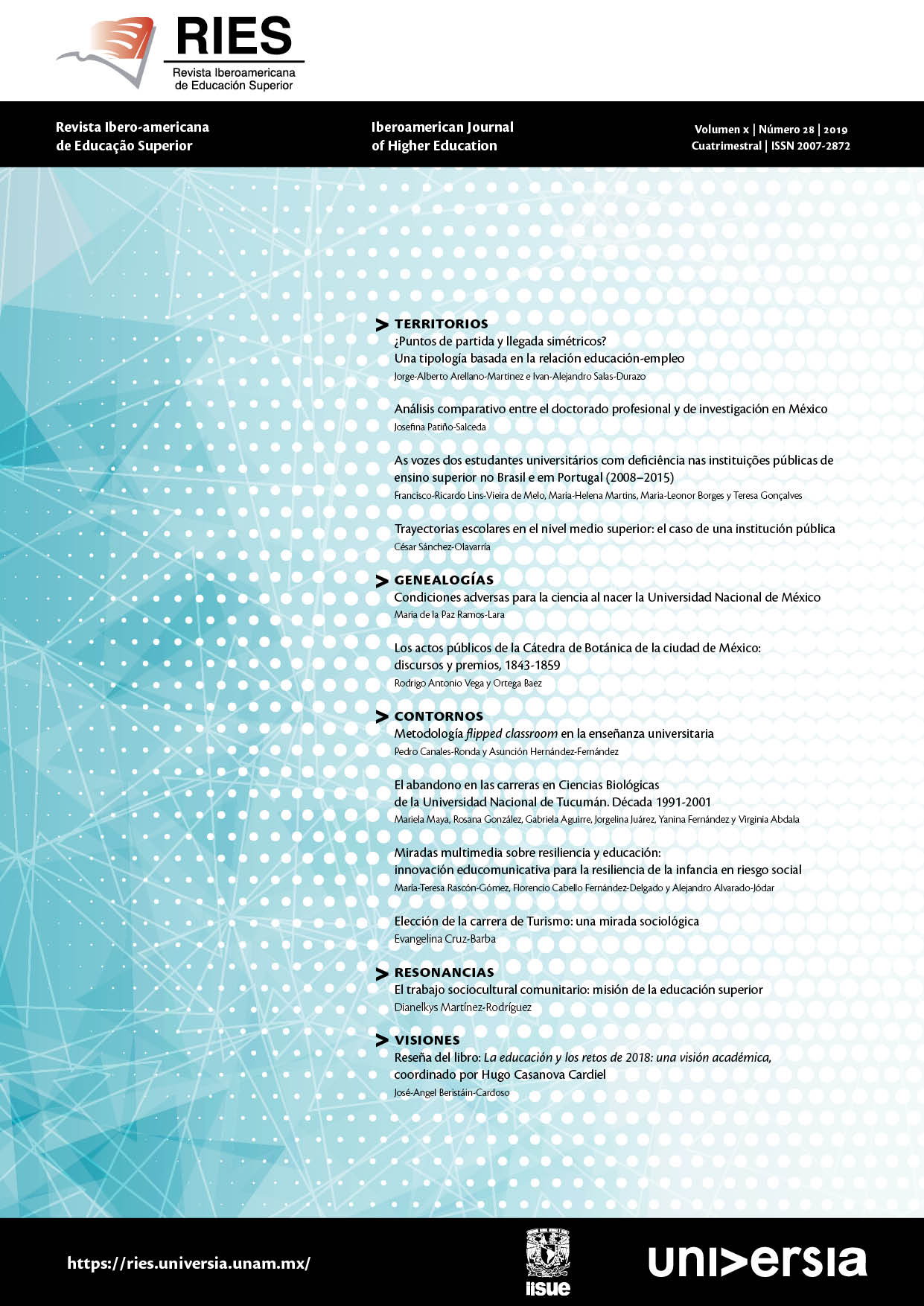Symmetrical Departure and Arrival Points? A Typology Based on the Education-Employment Relationship
DOI:
https://doi.org/10.22201/iisue.20072872e.2019.28.426Keywords:
education and employment, school trajectory, working students, taxonomy, analysis models, MexicoAbstract
This paper proposes a typology to classify and explain the relationship between higher education and employment based on the conjunction of elements associated with the sociology of youth, the theory of human capital and the higher education policies. The methodology of comparative qualitative analysis was used using Boolean logic for multidimensional analysis. The authors compared the cases of students just enrolled at the Law School of the University of Guadalajara and students close to graduating. The main result was the heterogeneity of students with regard to employment, highlighting its dynamic character during school trajectory.



